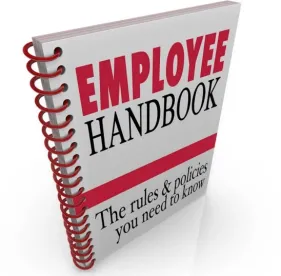Intermittent leave continues to present some of the most exasperating FMLA issues. In March, the San Diego-based Disability Management Employer Coalition (DMEC) issued a white paper showing the findings of its annual 2016 Employer Leave Management Survey, which involved 1,132 U.S. employers of all sizes. According to the Society for Human Resource Management (SHRM), “tracking intermittent FMLA leave” was one of the issues cited most by these employers as problematic, with thirty-five percent of survey respondents categorizing it as a “difficult” or “extremely difficult” problem.
Even in the best of circumstances – when an employee is cooperative, communicative and wants to work – unpredictable absences can impose burdens on coworkers, supervisors, and operations. Employers do not have many tools at their disposal when it comes to managing FMLA intermittent leave, so they should make the most of them. Some tips are provided below.
-
Be sure the employee truly meets all eligibility criteria to take FMLA leave. Otherwise, any leave provided is gratuitous, and certain FMLA-specific rules – such as the ability to make reductions from an exempt employee’s pay in partial-day increments – will not apply.
-
If the employee has taken some intermittent leave prior to formal FMLA designation, consider designating some of the leave retroactively, if permissible under FMLA rules.
-
Closely scrutinize information provided by the employee’s (or family member’s) health care provider on Department of Labor forms WH-380-E or WH-380-F. The physician must state that an employee’s absences are due to a FMLA “serious health condition,” AND that intermittent leave is medically necessary. If insufficient information is provided, work with the employee to obtain the necessary information using the procedures described in the FMLA regulations. It can be difficult to obtain follow-up information from a physician after intermittent leave has begun, so it is important to use the initial certification process to obtain all of the information the company may need.
-
Be sure to record all FMLA absences as FMLA leave, and count that leave against the employee’s FMLA entitlement. Each time the employee is absent or late, ask whether the absence is due to the approved reason for FMLA leave. Employers cannot require a doctor’s note for each absence.
-
If an employee is using paid time off during periods of intermittent FMLA leave, be sure to make appropriate reductions from the employee’s paid leave bank. If an employee has no paid leave available, the employer generally can “dock” the employee’s pay, even for exempt employees.
-
An employee taking intermittent FMLA leave can still be made to adhere to the company’s usual call-in procedures. Also, advance notice of absences should be given whenever possible, in accordance with company policy and as permitted by the FMLA regulations.
-
An employee who is absent for doctor’s appointments or other treatment is required, whenever possible, to schedule these treatments in a manner so as not to unduly disrupt the employer’s operations. Scheduling discussions should be diplomatic, however, to avoid claims of interference with FMLA leave.
-
An employee taking FMLA leave for purposes of planned medical treatment can be transferred temporarily to an alternate position that better accommodates the need for leave. The position must have the same hourly pay and benefits, but can have different duties. An employer cannot transfer the employee in order to discourage the taking of FMLA leave, and the employee must be restored to his or her original position when the need for intermittent leave ends. Note that the same rule does not apply to employees who require unpredictable absences — the FMLA regulations do not provide for a transfer in those circumstances.
-
Consider obtaining recertification when permitted by the FMLA regulations. For example, if an employee’s doctor estimated that he will be absent about twice a month, for 2-3 days each time, but the employee’s absences are longer or more frequent than that, consider seeking recertification on the ground that the frequency and duration of absences constitutes a “significant change in circumstances.”
-
Employers cannot require a fitness for duty certificate each time an employee returns from an intermittent FMLA absence. However, an employer can require such a certificate once every 30 days if there are reasonable safety concerns regarding the employee’s ability to perform his or her duties due to the serious health condition for which the employee took leave.
-
If the employee works in a state or locality with its own FMLA law, be sure to comply with that law as well.




 />i
/>i

